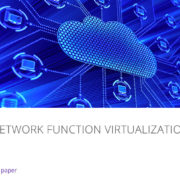5 Innovations NFV Will Help to Deliver
Network Function Virtualization (NFV) is showing a new way forward for networks and creating new possibilities in intelligent networking.
We have seen tremendous demand for a virtualized version of our next-generation session border controller (SBC) Orchid One. Service providers around the world want to deploy intelligent networks and are looking for a simple and efficient way to get started.
We see this demand as a very positive indicator in the market and the development of our virtualized SBC, vOrchid One, as a first step towards a new model for networking. With so much discussion around software-defined networking (SDN), it is exciting to see that service providers are embracing NFV and beginning their journeys toward software-defined environments.
As networking models change, we are seeing new innovations emerge that will lead to some pretty exciting developments in networking. If NFV is the beginning, what should we expect from networks over the next 10 years
- Global Intelligent Networks – Virtualized SBCs offer lower barriers to entry into intelligent network with lower CAPEX requirements. This will drive the adoption of intelligent networks while also enabling service providers of all kinds to experiment and explore new possibilities in networking. Intelligent networks will be rolled out in large global networks as well as small and niche areas.
- Auto-Healing Networks – Growth in NFV will support the deployment of networks that are able to heal themselves automatically. Next-gen SBCs that incorporate Big Data, machine learning and historical data analysis will add another layer of automation to create an auto-healing network. This will support “always on” applications like those associated with the Internet of Things (IoT). Auto-Healing networks will add the scalability required for serving billions of networked devices.
- Fully Automated Deployments – As innovation in orchestration and NFV continue, there is potential for networking to look a lot more like eCommerce where service providers pick and choose their solutions. Billing, fraud protection, business intelligence and other services can be selected from a menu and delivered with an opex-based model. This will give service providers the ability self-serve and customize the services they receive.
- Elastic Scalability – NFV is the first step towards offering truly elastic scalability in networking. With virtual SBCs in place, new instances of an SBC can be automatically deployed and delivered to meet peaks in demand and then phased out as demand slows. This will ensure quality of service (QoS) while also delivering efficient network usage.
- Click-to-Create Service Delivery – Eventually, service providers will be free to deploy networks wherever they are needed with templates for delivering different types of services. Blueprints for Voice over WiFi (VoWiFi) deployments, for example, can be made available by the network provider that enable these services to be rapidly rolled out with all network infrastructure made available through a NFV model. This will enable rapid monetization of new services and global agility for service providers.
It may not take 10 years but the transformation of network infrastructure is beginning. NFV is supporting new innovation and allowing new models to be developed and delivered to service providers. As we deploy our vOrchid One solution in networks around the world, we see tremendous potential for NFV and SDN to reshape networking on a global scale.
If you’d like to find out more about vOrchid One, please get in touch via our contact page










